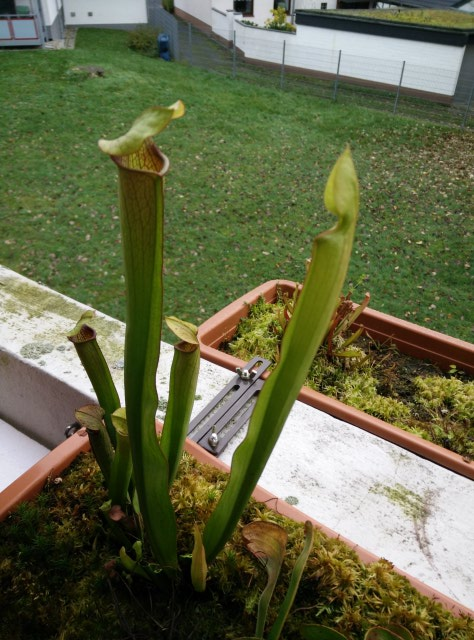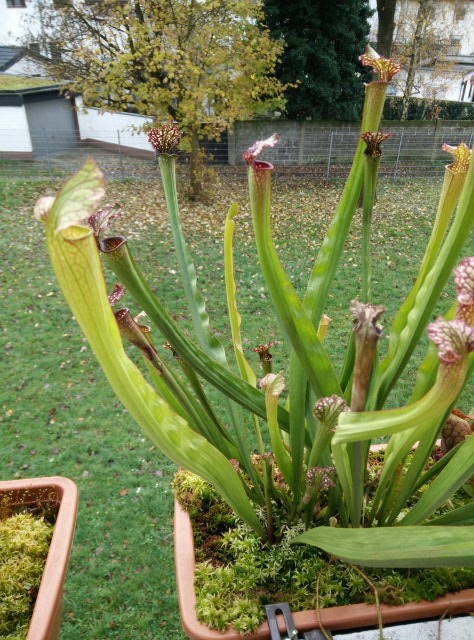Question
 S. rubra new leaves
S. rubra new leaves  S. leucophylla new lea
S. leucophylla new lea
Hi Jeff,
earlier this month you told me I should be ruthless when it comes to trimming off Sarracenia pitchers during the winter time, it would be a transpiration issue that should be minimized.
However, two questions came to my mind this morning while cutting off the pitchers...
1.) It is said that Phylodia can be left on S. flava and S. oreophila. But don磘 they transpire too? What is the purpose to leave these on?
2.) My leucophylla and rubra are still producing new pitchers...should I also trimm off new shots straight forward?
Thanks a tons guys, you are the bests!
Regards,
JP
AnswerHi JP,
1.) The phyllodia do transpire, but the amount of leaf surface area is dramatically less than pitcher leaves. They are also adapted to having these leaves during the winter, so they are tough and waxy. They give the plant a boost of photosynthesis in the early spring.
2.) At this point just trim off leaves that are starting to turn brown. I looked at your current temperatures and you're fairly warm still, so what you're seeing is not unusual. With the short days growth is slowing way down, and by December it will stop. Once you have a significant frost all growth will stop. That's what just happened to us as we just had a week of temperatures at night around -5 to -6 C. When you start having colder conditions it will be time to trim or cover your plants. If it looks like your facing an extended cold spell, and you need to cover the plants for awhile, then trimming everything back would be in order.
I also wanted to mention a little on identity of your plants. Your first photo, the S. rubra, looks strongly like an S. alata. Did the seller say what specific subspecies it was if it is a rubra? The second plant definitely looks like an S. leucophylla hybrid of some kind. The species has much more pure white tops to the pitchers. Also, next summer be sure your plants are in full sun. Their color is ok, but they look like the could have used a bit more sun.
Good Growing!
Jeff Dallas
Sarracenia Northwest
http://www.growcarnivorousplants.com







